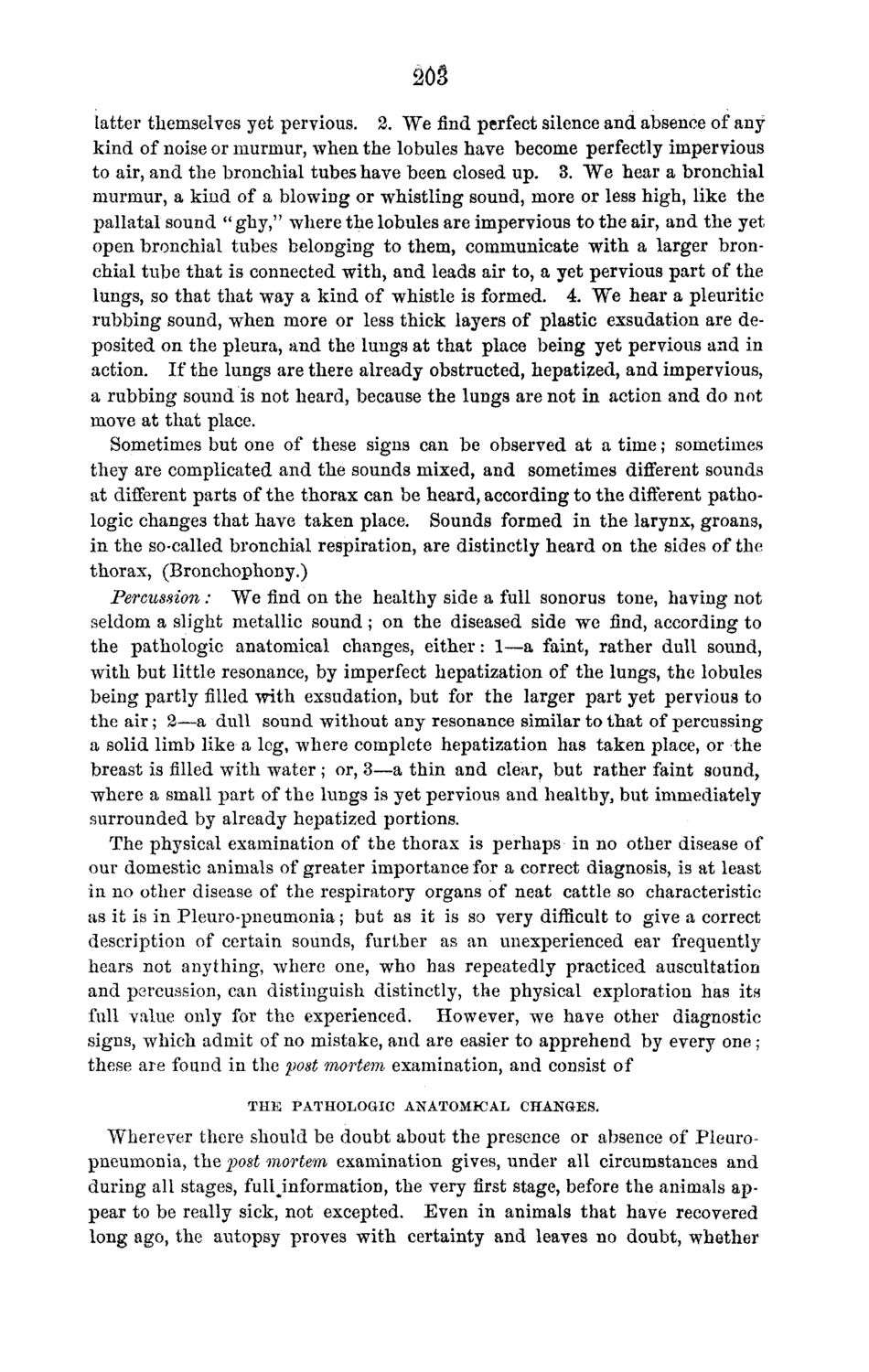| |
| |
Caption: Board of Trustees Minutes - 1870
This is a reduced-resolution page image for fast online browsing.

EXTRACTED TEXT FROM PAGE:
20S latter themselves yet pervious. 2. We find perfect silence and absence of any kind of noise or murmur, when the lobules have become perfectly impervious to air, and the bronchial tubes have been closed up. 3. We hear a bronchial murmur, a kind of a blowing or whistling sound, more or less high, like the pallatal sound " ghy," where the lobules are impervious to the air, and the yet open bronchial tubes belonging to them, communicate with a larger bronchial tube that is connected with, and leads air to, a yet pervious part of the lungs, so that that way a kind of whistle is formed. 4. We hear a pleuritic rubbing sound, when more or less thick layers of plastic exsudation are deposited on the pleura, and the lungs at that place being yet pervious and in action. If the lungs are there already obstructed, hepatized, and impervious, a rubbing sound is not heard, because the lungs are not in action and do not move at that place. Sometimes but one of these signs can be observed at a time; sometimes they are complicated and the sounds mixed, and sometimes different sounds at different parts of the thorax can be heard, according to the different pathologic changes that have taken place. Sounds formed in the larynx, groans, in the so-called bronchial respiration, are distinctly heard on the sides of the thorax, (Bronchophony.) Percussion: We find on the healthy side a full sonorus tone, having not seldom a slight metallic sound; on the diseased side we find, according to the pathologic anatomical changes, either: 1—a faint, rather dull sound, with but little resonance, by imperfect hepatization of the lungs, the lobules being partly filled with exsudation, but for the larger part yet pervious to the air; 2—a dull sound without any resonance similar to that of percussing a solid limb like a leg, where complete hepatization has taken place, or the breast is filled with water ; or, 3—a thin and clear, but rather faint sound, where a small part of the lungs is yet pervious and healthy, but immediately surrounded by already hepatized portions. The physical examination of the thorax is perhaps in no other disease of our domestic animals of greater importance for a correct diagnosis, is at least in no other disease of the respiratory organs of neat cattle so characteristic as it is in Pleuro-pneumonia; but as it is so very difficult to give a correct description of certain sounds, further as an unexperienced ear frequently hears not anything, where one, who has repeatedly practiced auscultation and percussion, can distinguish distinctly, the physical exploration has its full value only for the experienced. However, we have other diagnostic signs, which admit of no mistake, and are easier to apprehend by every one ; these are found in the post mortem examination, and consist of THE PATHOLOGIC ANATOMICAL CHANGES. Wherever there should be doubt about the presence or absence of Pleuropneumonia, the post mortem examination gives, under all circumstances and during all stages, Misinformation, the very first stage, before the animals appear to be really sick, not excepted. Even in animals that have recovered long ago, the autopsy proves with certainty and leaves no doubt, whether
| |